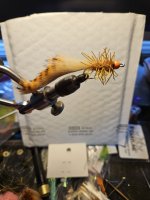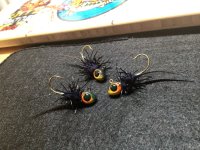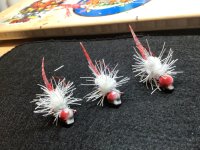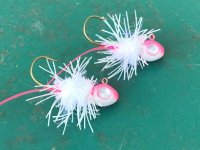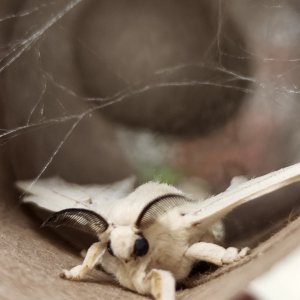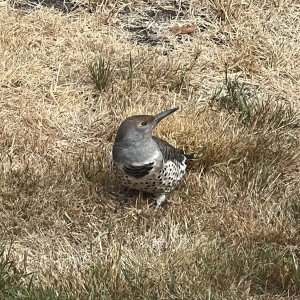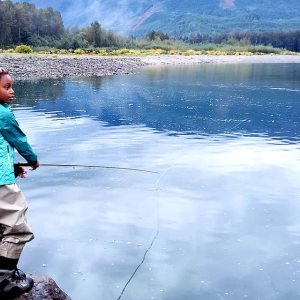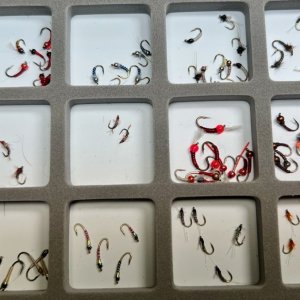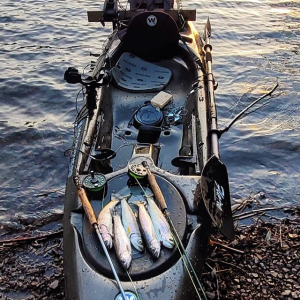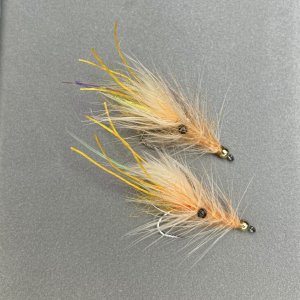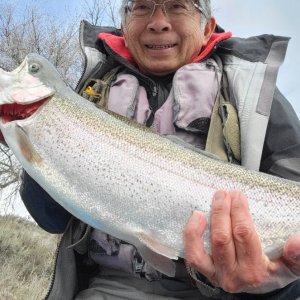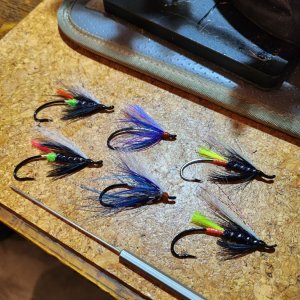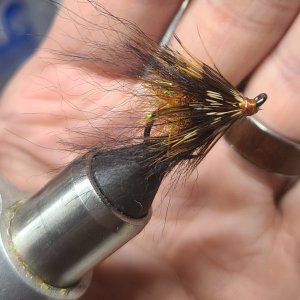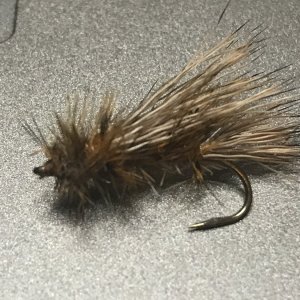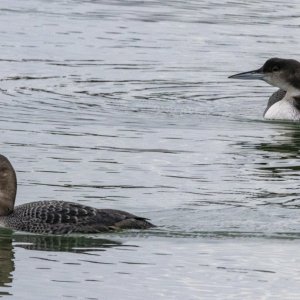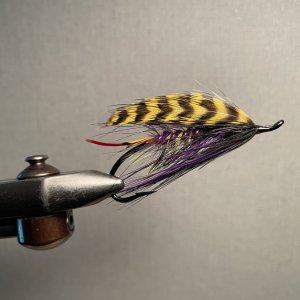Nature's Spirit had a booth at the recent Fly Fishing Show in Bellevue, and I saw a few things I thought I "needed." One of those things was a material I hadn't seen before: FNF Creeper. At first glance, this stuff seems to be a guide fly dream; dubbing, flex floss, and optional UV flash, all integrated into a convenient dubbing brush-like strand. I'm experimenting with it, and so far, I like it a lot. I'm thinking this stuff will be deadly for warm water fish in particular, but the guy at the booth told me he has enjoyed using it in big streamers for river fishing as well (says you can feel the wiggly stuff wiggling while you strip the fly, which sounds exciting). FNF recommends it for crab patterns, too, which may come in handy when I go to Florida in a few weeks....
How's this for a simple bass worm tie (taken from YouTube)? The tail is just a length of the Creeper, tied in at one end, twisted over itself until it furls, then tied in at the other end. The body is just palmered Creeper. Took me just a few minutes to tie and will take about 3 minutes after a couple more reps. Looks like the tail will bounce and wiggle nicely, and the jig head should help with action and sinking.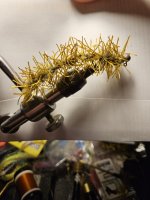
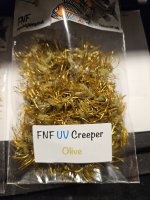
Any of you other sea run chasers thinking pile worms??? I sure am...
How's this for a simple bass worm tie (taken from YouTube)? The tail is just a length of the Creeper, tied in at one end, twisted over itself until it furls, then tied in at the other end. The body is just palmered Creeper. Took me just a few minutes to tie and will take about 3 minutes after a couple more reps. Looks like the tail will bounce and wiggle nicely, and the jig head should help with action and sinking.


Any of you other sea run chasers thinking pile worms??? I sure am...

